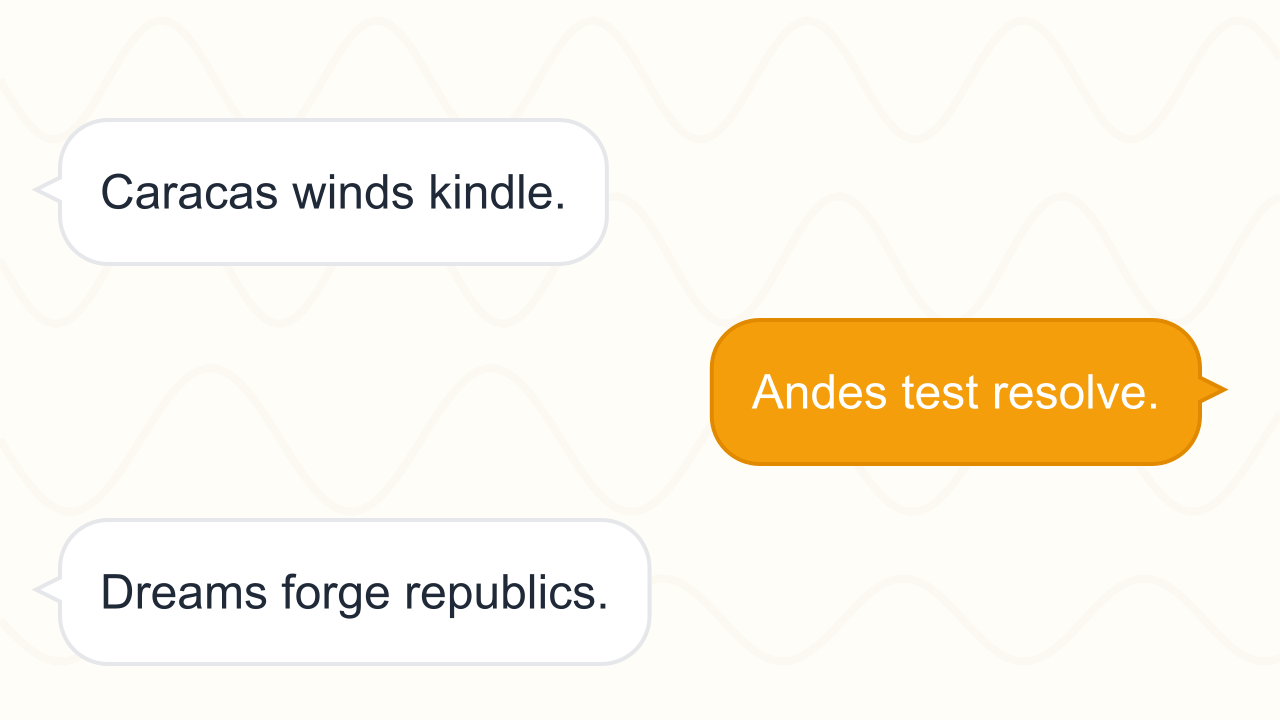Nelson Mandela: Long Walk to Freedom reading Exercise
Follow Nelson Mandela’s journey from rural South Africa to Robben Island and finally the presidency, tracing how his leadership helped dismantle apartheid and inspire global movements for justice.
Exercise Guide
How to complete:
Read the biography passages in order. Mark key dates, organizations, and turning points as you go. After reading, answer each question—some focus on factual recall, others invite you to analyze vocabulary, tone, or the broader impact of Mandela’s choices.
Success tips:
These passages blend personal narrative with political history. Pay attention to how Mandela’s decisions intersect with laws, protests, and international pressure.
- Highlight cause-and-effect phrases that connect legislation, activism, and public response.
- Use context clues to interpret vocabulary about law, diplomacy, and reconciliation.
- Track Mandela’s evolving strategies—from civil disobedience to negotiations—across decades.
- Notice direct quotations and consider the tone they convey.
- Summarize each passage to connect biography details with South Africa’s wider history.
Knowledge:
This biography reinforces skills in analyzing primary political movements, understanding apartheid-era legislation, and evaluating leadership qualities. You will explore topics such as nonviolent protest, international sanctions, truth and reconciliation efforts, and constitutional democracy.
Complete the Exercise
Reading Passage 1
Nelson Rolihlahla Mandela was born in 1918 in the village of Mvezo in South Africa’s Eastern Cape. After his father’s death, he was adopted by the Thembu regent and exposed to councils where elders resolved disputes. At the University of Fort Hare and later the University of Witwatersrand, Mandela studied law and joined classmates debating colonial rule and the color bar that segregated public life.
In the 1940s Mandela helped found the African National Congress (ANC) Youth League, championing mass action against pass laws that restricted where Black South Africans could live and work. He opened the country’s first Black law firm with Oliver Tambo, providing affordable legal defense to residents targeted by apartheid statutes. The 1952 Defiance Campaign saw Mandela coordinating civil disobedience, leading volunteers to burn pass books and occupy “Europeans-only” train stations.
Mandela’s organizing drew national attention, but also state surveillance. He was banned from public gatherings and faced charges for treason after the 1956 government raid on ANC leaders. Though acquitted in 1961, he concluded that peaceful protest alone could not dismantle apartheid, writing that nonviolent tactics required “a partner who can be moved by moral persuasion.” That realization set the stage for the next phase of his activism.
What early experiences introduced Mandela to leadership and dispute resolution?
Why were pass laws a focal point for Mandela and the ANC Youth League?
Which detail illustrates how Mandela tested the limits of nonviolent protest in the 1950s?
What inference can be drawn from Mandela’s statement about moral persuasion?
Which vocabulary term from the passage most closely means ‘formal prohibition’?
Reading Passage 2
In 1961 Mandela helped launch Umkhonto we Sizwe (“Spear of the Nation”), an armed wing of the ANC that sabotaged power stations and telephone lines to protest escalating repression. He traveled secretly across Africa seeking training and funding, speaking at the Pan-African Freedom Conference in Addis Ababa about the need for solidarity. Upon returning to South Africa, he lived underground and was dubbed the “Black Pimpernel” for evading arrest.
Mandela was captured in 1962, sentenced to five years for leaving the country without a passport, and later tried in the Rivonia case after police discovered ANC documents at Liliesleaf Farm. In June 1964 he and seven colleagues received life sentences for sabotage and conspiracy. During his statement from the dock, Mandela declared that a democratic and free society “is an ideal for which I am prepared to die.”
Mandela spent 18 of his 27 prison years on Robben Island, performing hard labor in a limestone quarry. He studied Afrikaans to understand his jailers, earned a law degree by correspondence, and mentored younger prisoners about discipline and unity. International campaigns—ranging from UN resolutions to student-led divestment drives—kept his name in the headlines and pressured the South African government to negotiate.
What tactic distinguished Umkhonto we Sizwe from the ANC’s earlier strategies?
What was the outcome of the Rivonia Trial in 1964?
Which quotation captures Mandela’s resolve during the Rivonia Trial?
How did Mandela continue to influence the anti-apartheid movement while imprisoned?
Which word from the passage is closest in meaning to “secretly avoiding capture”?
Reading Passage 3
Mounting international pressure and internal unrest forced the South African government to release Mandela on 11 February 1990. Within weeks he addressed crowds in Cape Town, calling for disciplined negotiations rather than revenge. He resumed leadership of the ANC, meeting President F.W. de Klerk to dismantle apartheid laws and secure the release of remaining political prisoners.
In 1993 Mandela and de Klerk shared the Nobel Peace Prize for their efforts to establish a multiracial democracy. South Africa’s first nonracial elections took place in April 1994, with over 19 million citizens casting ballots. Mandela was inaugurated as the country’s first Black president on 10 May 1994 and appointed a Government of National Unity that included former adversaries to emphasize reconciliation.
Mandela’s administration launched the Reconstruction and Development Programme to address housing, water, and electrification backlogs. He supported the creation of the Truth and Reconciliation Commission, led by Archbishop Desmond Tutu, to investigate past abuses while promoting restorative justice. After serving one term, Mandela stepped down in 1999, continuing to champion peace initiatives, HIV/AIDS awareness, and global human rights until his death in 2013.
What strategy did Mandela emphasize immediately after his release?
Which event confirmed the end of whites-only elections in South Africa?
Why did Mandela invite opposition figures into the Government of National Unity?
What role did the Truth and Reconciliation Commission play during Mandela’s presidency?
Which statement best summarizes Mandela’s post-presidential legacy?
Share this exercise
Help others learn reading by sharing this exercise
Related Exercises

Designing Regenerative Networks for Future Neighborhoods
Trace how innovators, residents, and policymakers build interconnected solutions that cut pollution, expand recycling, and redesign everyday systems across six detailed case studies.

Clean Cycles for Tomorrow
Discover how neighborhoods reinvent waste systems, deploy new materials, and empower residents to shrink pollution footprints while expanding recycling access.

Pollution and Recycling: Restoring Our Cities
Explore how air, water, and waste pollution affect urban life, and examine the recycling innovations and community actions working to clean cities around the world.

Simón Bolívar: Liberator of the Andes
Journey with Simón Bolívar from his Caracas youth through daring Andean campaigns and the struggle to define lasting republics across northern South America.

Wu Zetian: Mandate of the Tang
Follow Wu Zetian’s ascent from a palace attendant to emperor of the Zhou dynasty, examining how she wielded scholarship, alliances, and reform to shape eighth-century China.